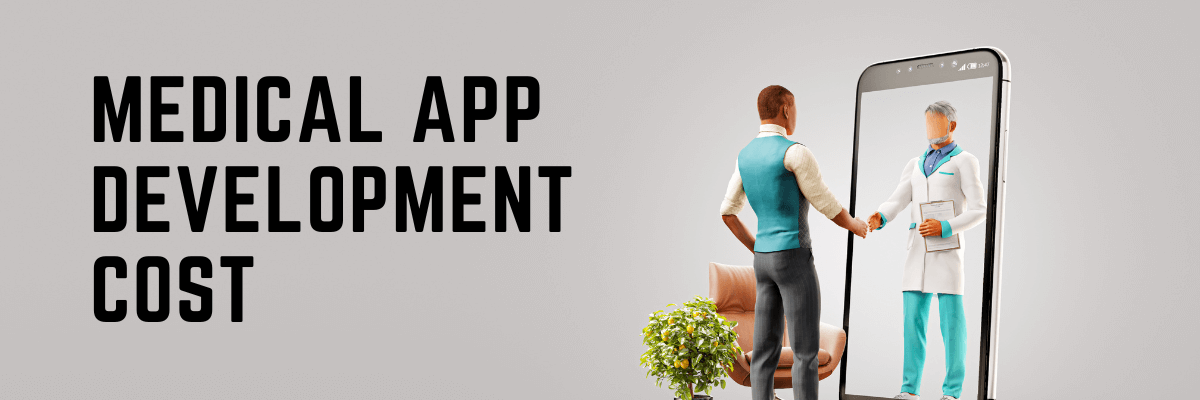
In today’s rapidly changing healthcare world, technology is essential. The development of medical apps has been a game-changer, making it easy for users to access important healthcare information, get personalized advice, and manage medications efficiently. However, for those considering entering the app development world, understanding the cost and effective ways to save money is crucial. In this knowledgeable blog post, we explore the factors that affect the cost of developing medical apps. We also look at simple and practical ways to reduce expenses, making app development affordable without compromising quality or functionality.
In addition to cost considerations, the complexity of medical app development lies in ensuring compliance with strict regulatory standards. Healthcare apps must adhere to stringent privacy regulations such as HIPAA (Health Insurance Portability and Accountability Act) in the United States or GDPR (General Data Protection Regulation) in the European Union. Compliance with these standards adds another layer of complexity and cost to app development. Developers must implement robust security measures to protect sensitive patient data.
Furthermore, integrating advanced technologies like artificial intelligence (AI) or machine learning (ML) into medical apps can enhance their functionality but also increase development costs. AI-driven features such as symptom analysis or predictive analytics require sophisticated algorithms and extensive testing to ensure accuracy and reliability. While these technologies offer immense potential to improve patient care and diagnosis, their implementation necessitates investment in specialized expertise and resources, contributing to higher development expenses.
The development of a medical app requires numerous factors that impact the total cost. Here are a few of the most important elements that impact the expense:
1. Features and Functionality
The amount of complexity in features directly affects the cost. Basic features like registration of users, reminders for medication and dissemination of information are common. But more advanced functions such remote consultations for telemedicine, AI-driven symptoms analysis and prescription management can significantly increase the cost.
2. Platform Selection
The decision to develop native apps that works on iOS, Android, or cross-platform solutions affects the budget. Native apps usually cost more because of the need for separate development on each platform.
3. User Interface and Experience
A user-friendly and intuitive design is essential to the success of a medical app. Making sure that the UI/UX is well-crafted could increase the initial cost, but it pays off in terms of satisfaction with the user and retention.
4. Compliance and Security
Healthcare apps must comply with strict regulations and guarantee the highest levels of security for data. Implementing compliance standards and strict security measures can contribute to the overall expense.
5. Integration with Third-Party Services
If your application requires integration with other services such as electronic health records (EHR) systems or payment gateways, additional costs could arise.
Now that we’ve identified the elements that affect costs, let’s look at strategies for optimizing your budget:
1. MVP Development
Think about adopting a Minimum-Viable Product (MVP) approach. Start with the most essential features to start the app quickly, and then collect feedback from users. This process allows for gradual enhancements to features according to user requirements and helps reduce development costs at the beginning.
2. Cross-Platform Development
Choose cross-platform development frameworks such as React Native or Flutter to create your app on different platforms. This reduces development time and costs as compared with native development.
3. Open-Source Solutions
Make use of open-source frameworks and libraries to avoid creating new features. This not only speeds up development, but reduces the costs associated with proprietary software.
4. Outsourcing Development
It is worth considering outsourcing development to regions that have lower labor costs, while still making sure the quality of work is maintained. Working with skilled development teams can offer cost-effective solutions that do not compromise quality.
5. Cloud Services
Use cloud services to host your data and store it. Cloud platforms can be scalable and cost-effectiveness which allows users to pay only for the services they utilize rather than investing in costly infrastructure in the beginning.
Ultimately, creating an app for medical purposes requires careful consideration of the various factors that impact the cost. By analyzing these factors and applying strategies to develop an app of high-quality that meets the demands of users without spending a lot of money. The key is to strike a balance between cost-effectiveness and functionality to ensure the long-term viability of your app for medicine in the crowded healthcare technology market. By understanding the factors influencing app development costs and implementing strategic measures to mitigate expenses, developers can create high-quality medical apps while staying within financial limits.
By developing medical application from techxpert, you can contribute to advancing healthcare technology while easily managing your app development budget. Together, let’s keep finding new ways to improve healthcare delivery through technology.
With Techxpert’s expertise and dedication to innovation, you can confidently navigate the complexities of medical app development and make a positive impact on patient care and outcomes.
Keep your number active; you'll receive a call from an app expert with a free price estimate 😊
Techxpert is a Software and App Development Agency with the most experienced Android/IOS app developers in the industry.
+1 631 392-6804
+971 52 679 4784
+971 55 653 1972
+92 324 676 1290
Subscribe For Discounts
© Techxpert.io 2024. All Rights Reserved